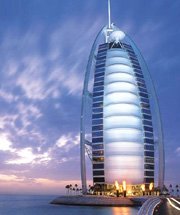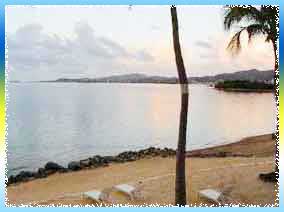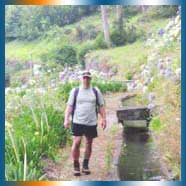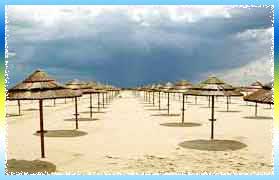
- Home
- Travel Packages
- Top Destination
-
Travel Attraction
By Category
Top Attraction

- Travel Agents
- Car Rentals
- Hotels

Sagres is a town located closely to the most south westerly part of Europe that is the Cape of St Vincent. Instead of the fact that it gives a desolate feel to one, it is well-known for its beautiful sun-kissed beaches amongst the surfers and sun bathers. Over the centuries this land has moulded into extraordinary coastal terrain due to change in the climatic conditions. It is surrounded by magnificent and lofty cliffs that convey the message of its glorious past. Earlier, Romans use to call Sagres “Promontorium Sacrum” which means end of the world where at sunset the sea water boils. It has played an imperative role in maritime history and has inhabited some of the greatest sailors of past. It was during the time of Prince Henry that a fortress was built up to train pioneering Portuguese explorers for some treacherous around the world voyages. This school gave birth to some famous voyagers like Vasco Da Gama etc. It also has the historical lighthouse, build in the 4th century that even today guides the ship during darkness. Today, Sagres is not only popular for its attractive landscapes but also for its fish which is fresh as well as abundant.
Explore More
The name Calheta originated from the narrow inlet serving its harbor. The town of Calheta is surrounded by towering mountains, endless lush green mantle and the vast ocean. It is one of the first locations in Madeira Island which is subjected to farming. Amongst the settlers, Calheta was a place of interest for noblemen and knights. Joao Gonsçalves Zarco was among those settlers who later donated this land to his daughter. Calheta was raised to the category of town by royal charter, which was issued in 1825. Going deep into its golden history and cultural heritage, one points out to the valuable heritage of a religious nature of civil parish. Calheta is one of the civil parishes in Madeira with the largest number of chapels. The main economic activities here are agriculture, trade and industry. At once the sugar industry here was progressing so much that there were eight sugar mills running at that time but now only one is in operation. This area has abundant variety of fishes and is known for the same. Calheta is also famous for producing the best white Rum.
Explore More
Faro is a Portuguese district located in the south of the country. It has numerous beaches which are admired for their immense ecological value and beauty. Golden sands, crystal clear waters; strong waves are some of the highlights of these beaches. The beaches in Faro offer all types of services to the tourists. Excitement is surely going to clasp your interest in Faro.It has been the administrative seat of Algrave region. It has a rich and a glorious past which dates back to Roman times. The city still has Arab and Roman ruins. Faro has many influences since Paleolithic age. During the time when Roman invaded the city it was a flourishing city then it was occupied by the Visigoth, and finally by the Moors who called it as Ossonoba. Later the name was changed to Santa Maria instead of Ossonoba.But as the centuries passed, it came to known as Faro. The city is particularly attractive as it is surrounded by the Roman walls, inside a spacious open square that was once the site of the Roman Forum.It has many beautiful Churches, Palaces, museums and other monuments.
Explore More
Algarve is the westernmost tip of Europe. It lies in the south of Portugal. It has striking sandy beaches washed by the Atlantic Ocean. It is the most clean and unpolluted region of Europe. The thick flora and fauna makes it a perfect holiday destination. The beautiful and enchanting landscape is sure to win your heart. Its geographical location makes it an important province which had been invaded and by the Phoenicians, Romans and Moors. The past of Algarve is closely associated with the sea. It was the base of the famous Henry the Navigator who helped established a school for training young minds to undertake difficult voyages.
Explore More
Tavira is a word for beautiful town and great beaches. It is east of Faro in the south-east corner of Portugal. Tavira is considered to be one of the most photogenic towns of Algarve with shining white-washed houses topped with decorative chimneys and pyramid shaped roman style roofs. This enchanting place is situated on the Gilao river, giving you some of the most splendid views. Tavira has some of the world’s magnificent churches which have amazing architecture and carved high altar. It is very rich in its heritage and is a town with the history that dates back to 2000 BC. The international airport at Faro is just 30 km away from the town. Since the weather is cool most of the time, Tavira is a year around holiday destination.
Explore More
Setubal is a city located on the northern bank of the Sado river estuary approximately 40 Km south of Lisbon. Despite being a sizable port town with no beaches, Setúbal (shtoo-bahl) still draws its fair share of visitors. Setúbal is a coastal town, known for its fishing activities, traditions and industrial area. It's the capital of the Setúbal district. You might also want to check out Serra da Arrábida, for the nature part of Setúbal. Among its attractions are Portugal’s first-ever Manueline church; a castle with sweeping views; and a compact pedestrian centre with a jumble of clothing shops, outdoor cafés and simple guesthouses. Still, it’s the seafood that draws most people here, particularly regional specialities like caldeirada (fish stew). Setúbal is also the closest town to the lovely beach-edged Parque Natural da Arrábida, and the Reserva Natural do Estuário do Sado, which is home to around 30 bottlenose dolphins and the winter abode of more than 1000 flamingos. The estuary’s mud banks, marshes, lagoons, dunes and former salt pans house white storks (spring and summer) and resident marsh harriers and little egrets. Following its heyday as a world power during the 15th and 16th centuries, Portugal lost much of its wealth and status with the destruction of Lisbon in a 1755 earthquake, occupation during the Napoleonic Wars, and the independence in 1822 of Brazil as a colony. A 1910 revolution deposed the monarchy; for most of the next six decades, repressive governments ran the country. In 1974, a left-wing military coup installed broad democratic reforms. The following year, Portugal granted independence to all of its African colonies. Portugal is a founding member of NATO and entered the EC (now the EU) in 1986. The Romans did a lot of fish-salting here, then came the Barbarians, then the Moors. The town developed after the 13th-century Reconquista, but it only boomed after 19th-century industrialisation.
Explore More
The town of Evora known like the golden age of Portugal after the destruction of Lisbon by the earthquake of 1755. Also is registered in the UNESCO with World Heritage list. Evora is located at the intersection of 3 river basins. About 100 km. east of Lisbon, it's constructed high above the surrounding plain. The founding of the city dates back to the dawn of the Christian era. A city of Portugal's interior, Evora is located at the intersection of three river basins. About 100 km. east of Lisbon , it is constructed high above the surrounding plain. The founding of the city dates back to the dawn of the Christian era. Under the Aviz Dynasty (1385-1580), Evora became the second most important city of the kingdom after Lisbon. In the 16th century, Evora reached its golden era as witnessed by a number of architectural realisations. This was also the beginning of great Portuguese maritime expeditions, when the ports of call on the world's maritime route - Madeira, the Azores, and the Cape Verde Islands - were discovered. In the 17th century, a Vauban-type fortification was constructed. In the 18th century, the Company of Jesus, which had spread intellectual and religious enlightenment since the 16th century, was expelled, and Evora went into de. On the 18th century beginning the Company of Jesus, which had divided intellectual and religious enlightenment from the 16th century. Nowadays the town of Evora is a real treat. The walls and the vestiges of walls, which are bordered with gardens are beautiful. The low white houses with their tile roofs. However there are several convents and palaces, there is an aqueduct which dates to 1537 and numerous fountains. Even if you are not a history buff, Evora should be on your itinerary. Evora's spectacular Roman remains include the Templo Romano and the Termas Romanas (Roman Baths). The Templo Romano is one of the best-preserved Roman monuments in Europe and is thought to date to the 2nd or 3rd century. The Termas Romanas (Roman baths) were discovered under the Câmara Municipal or town hall in the 1980s and can be visited Monday-Friday 9am-5.30pm during office hours. Among Evora's many fine churches, the standout is the Igreja de Sao Francisco with its macabre Capela dos Ossos. Other beautiful churches include the Igreja de Sao Francisco with fine azulejos. Next door the Convento dos Loios has been converted in to a top-end pousada with a noted restaurant.
Explore More
The capital of Portugal, Lisbon the city's modern, vibrant and cosmopolitan identity is today much similar to that which it enjoyed in the 15th and 16th centuries during the age of the great discoverers, when Lisbon was the centre of trade with the East and the starting point for maritime exploration of the globe. Situated on the north banks of the River Tagus, the charm of Lisbon exists in its strong links to the past; renovated palaces, magnificent churches and an impressive castle mirror the city's rich cultural heritage. Its eclectic blend of neighborhoods, culture and architecture distinguish this capital city uniquely from the other European capitals and make it a truly fascinating and comprehensive city to visit. A city set on seven hills, as the legend tells, with its cobble stoned pavements and narrow streets full of Art Nouveau cafés promises a lot to discover: Its downtown, the Baixa, located around Rossio, Praça do Comércio; situated on the hill around St. George’s Castle, Alfama and Mouraria; Lisbon’s most traditional quarters with their typical streets, Bairro Alto and Madragoa, and set on Tagus River, Belém offer an unforgettable experience of city’s past at the present. The city fathers of Lisbon elected to invest in some rejuvenation in the 1990s, and this ongoing focus on the future has made the most of the city's attributes and attractions, both old and new. Infrastructure has also been improved, with additions like the impressive Vasco da Gama Bridge across the River Tagus, which links the city's airport to a network of national motorways and has facilitated access to other parts of Portugal. While much is new, there is plenty of the old left to charm visitors, giving the metropolis a slightly provincial air. The delightful, picturesque medieval section of Alfama skirts the city's Sao Jorge castle, and historic wooden trams ply noisily up and down steep hills past art deco cafes and mosaic-decorated pavements. Many of the relics of the city's golden age were destroyed in an earthquake in 1755, but some survived and are popular tourist attractions, complemented now by modern sights, like the futuristic Oceanarium. Lisbon also hosts a great number of remarkable museums of ancient and modern art, some of which are the Calouste Gulbenkian Museum, National Museum of Contemporary Art, National Coach Museum, and Carmo Archaeological Museum. good way to orient yourself and enjoy a panoramic view is to climb one of the seven hills - Penha de França, Senhora do Monte, Graça, São Jorge, São Pedro Alcantara, Santa Catarina, and Estrela. São Jorge is topped by a famous castle, Castelo de São Jorge, and has the most spectacular picturesque view - especially as the sun sets over the Tagus river.
Explore More
Santarém (altitude: 108m/354ft), capital of the old province of Ribatejo, is a town of low whitewashed houses built on a hill above the right bank of the Tagus, occupying a position of great strategic importance. The town is worth visiting for its interesting churches and the splendid views from here over the Tagus. Santarém is the center of an important agricultural region growing mainly corn, fruit and vegetables. An important agricultural fair (Feira Nacional de Agricultura) is held here in early June each year. It interests tourists because of the accompanying folklore program and the bullfights. Santarem is a town of historical significance, once renowned as the strongest fortress in the kingdom and second only to Lisbon in importance in the country Its origins can be traced back to the Iron Age, and Julius Caesar used it as an administrative centre for Roman legions. The name originates in the legend of martyred Saint Iria who, legend tells us, was thrown into the river at Tomar, having been killed for not being chaste, and her body washed up at Santarem. In Roman times, as Iulianum Scalabitanum, the town ranked with Braga and Beja as one of the main trading posts in Lusitania. During the Moorish period (8th-12th C.) it was fortified by a castle. After its recapture by Afonso Henriques in 1147 Santarém became the residence of several kings. Here in 1319 King Dinis received the papal bull recognising the order of the Knights of Christ which he had founded. Since its recapture by the Portuguese, Santarem has been favoured by royal and important visitors and a good number of its own people have become significant figures in Portuguese history. Both Dom Alfonso IV and Dom João II ruled from the Royal Courts established here in the 14th century and Henry the Navigator had big interests in local industry. Another famous explorer, Pedro Alvares Cabral, is entombed here and a more recent hero, Capitão Maia, led troops from here to end the Salazar dictatorship in 1974. Before all of these Portuguese greats, the still revered arab-andaluz poet Ibn Bassam was born here and wrote beautiful poetry describing the area. He referred to it as the ‘last town in the west’ towards the end of his life, when forced to flee following Christian invasions.
Explore More
Coimbra is the third largest portuguese city with 150.000 inhabitants and it is the biggest city in the central area of Portugal. Coimbra, the first capital of Portugal, is home of Coimbra University, one of the oldest in Europe, founded in Lisbon in 1290 by king Dinis and then transferred to Coimbra in 1537 by King João III. The old University buildings are situated on the top of a hill, which overlooks the city and the river. It is well worth a visit. You enter the old part of the University through an Iron Gate with stone works from the XVII century in manierist style. Inside the gate is the enormous University Patio, with a large statute of João III. Beside the gate, to the left when entering, you will see the long low palace wing with several rooms that worth a visit. The town of Coimbra is second only to Oporto and Lisbon. Its ancient buildings cling to the side of the hill that rises above the curves of the river Mondego, the ornate buildings of the famous University of Coimbra are its crowning glory. Indeed the university is still the lifeblood of the town and the change in atmosphere is notable when the summer holidays come and the thousands of students head back to their hometowns. Coimbra, which was the capital of Portugal from 1139 to about 1260, has a large archeological site with extensive ruins dating from the time it was a Roman city called Aeminium. Coimbra called the old town ("cidade alta" or "upper town") are fine old churches and narrow streets standing up on a hill overlooking the Modego River. nother highlight in Coimbra is the Baixa, on the way there you will visit the old cathedral from the XII century, in tipical portuguese romanesque style. The Baixa is the part of the city down by the river with most traditional shopping. It is full of narrow streets and crowded shops, banks, churches, cafés, hotels and walks to stroll along the Mondego rivers' banks. Around Coimbra within an hour drive there are several places that worth a visit: Buçaco, Lousa, Luso, Curia, Figueira da Foz, Condeixa, Conimbriga, Montemor-o-Velho... You can settle in Coimbra for four or five days and visit all this area
Explore MoreBali Indonesia Tour Package from Trichy - Chennai - Tamilnadu
6 Days/ 5 Night
Bali - Viseu - Porto - Jakarta
Spanish Fiesta With Portugal 10Night - 11Days Tour
11 Days/ 10 Night
Barcelona - Valencia - Madrid - Lisbon - Granada
The Monumental Beauties of Spain And Portugal
9 Days/ 8 Night
Madrid - Coimbra - Lisbon - Seville
Best Of Spain - Portugal 10N - 11D Tour
11 Days/ 10 Night
Barcelona - Madrid - Lisbon - Sevilla - Granada

Viseu[1], is a charming hilltop city and district capital (around 50,000 inhabitants) in central Portugal. It is situated in the Beira Alta between the mountain ranges of the Serra da Estrela and Serra do Caramulo, about halfway between Aveiro and Guarda off the new A25 Motorway right in the middle of the famous Dao wine region. Viseu is both a city and a district in central Portugal. The city population is 50583 in 9 parishes the municipalty has 94590 in 34 parishes. Is one of the most important centers in central interior Portugal is crossed by a important european road link IP5 that connects it to Aveiro seaport and Guarda and then to Spain and Salamanca. In 693 AD it was captured by the Moors who held it for most of a century. The cathedral dates from 830 AD. The city is also home to Portugal's biggest nightclub called Day After and it is known locally for its thriving nightlife.
Explore More
Porto, or Oporto, is Portugal's second largest city and capital of Portugal's beguiling north. Porto was selected the 2001 European Capital of Culture which bestows upon the city money for lots of cultual improvements. Expect to see construction projects if you go. The numerous restaurants, cafés, pastelarias, bars and cervejarias provide excellent freshly prepared food for all budgets. Try the traditional pastry of the region, the Viriato, for sale in good pastelarias. Portugal, by virtue of its position on Europe's Western edge, gets fewer travelers than other Mediterranean places. But visitors are rewarded with uncrowded cities and moderate tarifs for food and hotels. This is a place where you can splurge on a stay at a fine manor house and live in luxury for around 100 Euros a night. For the year 2001 Porto shared the title of the "European Capital of Culture" with Rotterdam in the Netherlands. Porto is a fascinating city with lots of unknown treasures to discover by just strolling around. Here, at the delta of the Douro River, the second heart of Port wine beats. The wines, that are produced in several "quintas" up the river on step hills, are here bottled and shipped to all over the world. Vila Nova de Gaia, the city opposite of Porto on the left bank of the River, is the home to all the famous Port wine companies like Taylors, Dows, Offleys, Calem etc. Porto, or Oporto, is Portugal's second largest city and capital of Portugal's beguiling north. Porto was selected the 2001 European Capital of Culture which bestows upon the city money for lots of cultual improvements. Expect to see construction The city is officially styled "a muito nobre, sempre leal e invicta cidade do Porto" (the very noble, always faithful, and invincible city of Porto). This is usually shortened to "a Cidade Invicta" (the invincible city) a title won because of Porto's unparalleled resistance against Napoleonic troops during the Peninsular war. The city is quite variegated architecturally, with medieval as well as modern living side by side. Porto's geography is hard on the feet, but pleasant to the eye. The city is extremely hilly, with many buildings built into a cliff face that overlooks the river. Stairs cut into the stone run up and down the cliff face and offer a laborious but rewarding walking tour. Across the river from Porto proper, in the suburb of Gaia, are located the warehouses of notable companies dealing with Port Wine, such as Cálem, Fonseca, Sandemans, Kopke, and others.
Explore MorePortugal is a country located on the Iberian Peninsula, in Southwestern Europe. The official name of Portugal is The Portuguese Republic. It is the Unitary Parliamentary Constitutional Republic. Attraction points for visitors in Portugal are Lisbon, Madeira, and the Algarve, but government of the country is also trying to modify and develop new destinations like Alentejo, the Douro Valley, and Porto Santo Island.
92,212 square kilometers (35,603 square miles)
10,581,949 (estimated)
Portuguese (official)
+351
WET (UTC+0)
Summer (DST) - WEST (UTC+1)
Portugal
Lisbon
Euro (EUR)
Lisbon
The climate in Portugal is Mediterranean. The country has warm summers that could turn hot sometimes and mild winters. The average temperature remains between 15°C and 25°C in summer, i.e., June to September and between 9°C and 20°C for all other months. Rainfall generally occurs in between the months of November and June. Snow is rare in all parts of Portugal except in the mountains and in the Serra da Estrela range.
Portugal lies in between latitudes 32° and 43° N, and longitudes 32° and 6° W.
Territory & Capital : Portugal is the westernmost country of mainland Europe, and shares a border with the Atlantic Ocean to the south and west, and Spain to the east and north. The capital of Portugal is Lisbon.
Suitable Visiting Seasons : All the seasons are favorable to visit Portugal due to its temperate climatic conditions. But the crowd of visitors usually chooses to visit the country in between March and October. In winters, crowd is less but coastal weather remains very pleasant.
Airlines, Railways, Ships and Road transports are available in Portugal for transportation. But, road transport is the most popular way of travelling in the country.
Contact the nearest embassy of Portugal for updated details on the requirements for obtaining visa.